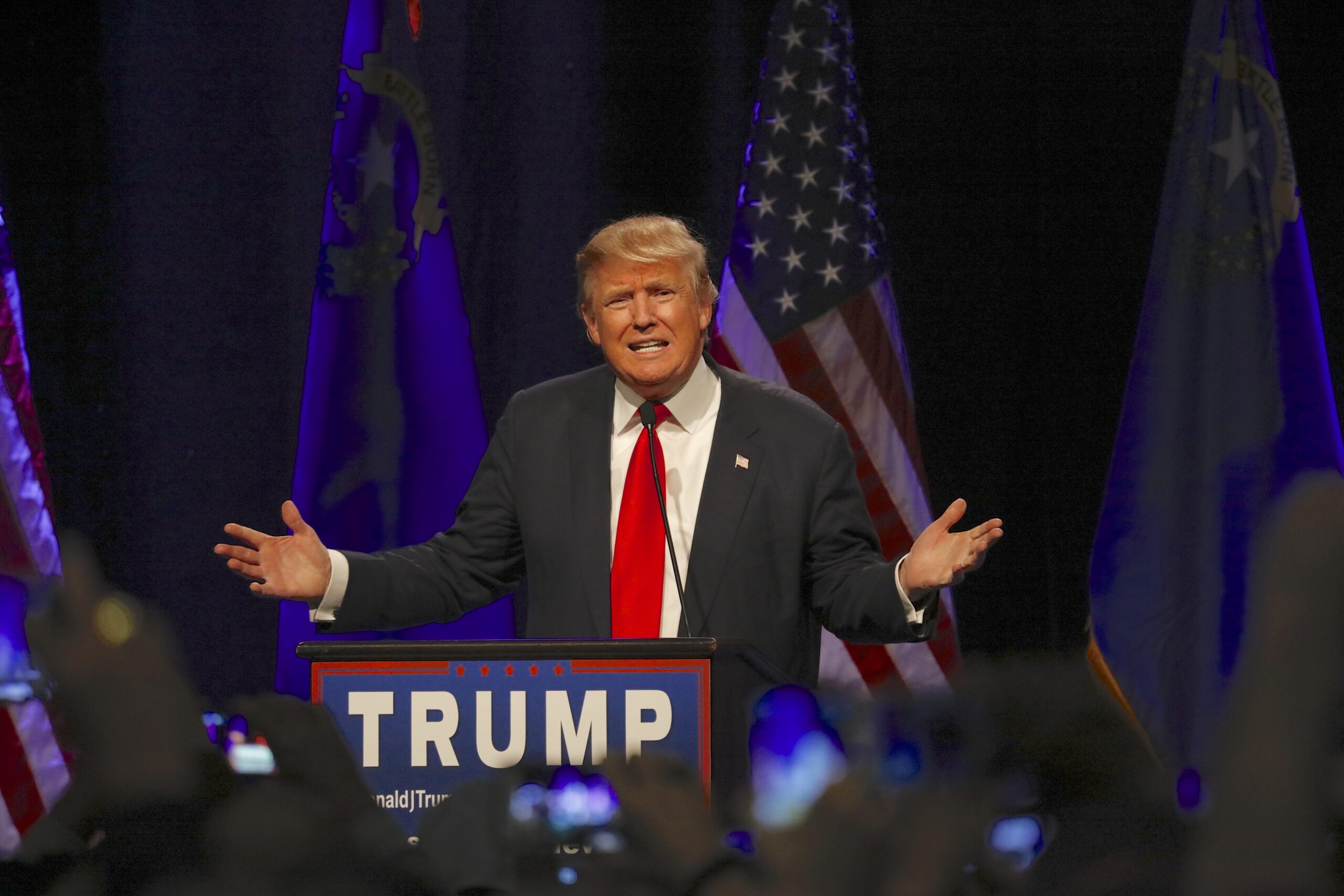There’s been much talk in recent months about what a possible second Donald Trump presidency in the United States could mean for Europe, Russia’s war in Ukraine, the Israel-Palestinian conflict and China. But there’s one more country closely watching the race: Iran.
Another Trump presidency could pose immense risks for the Iranian leadership, especially given the recent tit-for-tat strikes with Israel, the looming threat of a wider Middle East war, and other significant internal challenges.
Under such conditions, there are three ways a new Trump administration might pose a threat to the clerical establishment: a potential economic shock, bolder military action against the regime and increased protest movements.

Renewed economic pressure
In 2018, Trump withdrew the US from the Iran nuclear deal negotiated by his predecessor, Barack Obama, and imposed crippling sanctions on the country as part of his “maximum pressure” campaign on the Iranian government.
Iran’s then-vice president, Eshagh Jahangiri, described the subsequent year as the “toughest” since the Islamic Republic’s inception. Trump’s campaign reduced Iran’s oil exports to a historic low of under 400,000 barrels per day, significantly slashing the country’s petrodollars, which represent about 70% of government revenues. Moreover, between 2018 and 2020, Iran’s national currency depreciated by more than 600%.
After Joe Biden was elected president in 2020, Iran has managed to increase its oil exports. It was recently reported that Iran’s oil exports have reached a six-year high of around 1.56 million barrels per day in the first three month of 2024. Republicans in the US blame the Biden administration for not enforcing sanctions against Iran, while the White House insists they are.
With Iran’s economy still weakened, Trump’s potential return could bring a new wave of pressure. Iran’s Chamber of Commerce, Industries, Mines and Agriculture has noted, for instance, that a Trump return will cause Iran’s oil exports to “suffer again”.
The head of Iran’s Parliament Research Centre has also highlighted the country’s current budget deficit of US$3.7 billion, warning a Trump return would necessitate being ready for “increased sanctions pressure and an economic shock”.
Another economics expert, Morteza Afghe, struck a more dire note when he warned of a potential “collapse of Iran’s economy”. Due to Iran’s more strident anti-Western policies under President Ebrahim Raisi and the dominance of radical factions in parliament, Afghe believes Trump would be even more determined to escalate his “maximum pressure” campaign on the country.
There are concrete signs of this nervousness already – Trump’s sweep of the Republican nominating contests earlier this year coincided with a 20% fall in the value of the Iranian rial.

Security implications
On the security front, Trump’s possible return is reminding the Iranian leadership of a significant loss under his presidency: the 2020 killing of General Qassem Soleimani, the former commander of the Islamic Revolutionary Guard Corps’ Quds Force, in a US airstrike.
When he was killed, Iran’s supreme leader, Ali Khamenei, described Soleimani as the architect behind the Iran-backed militia networks in the Middle East, known as the “axis of resistance”. Khamenei also said he “bows to Soleimani” for his achievements with the Quds Force. This illustrates the profound impact the US strike had on Iran’s security interests.
A recent Israeli airstrike on the Iranian diplomatic compound in Syria’s capital this month also killed seven members of the Quds force, including two generals. This led to Iran’s unprecedented retaliatory attack against Israel, which Trump responded to by reposting a threatening tweet from 2018.
He also said at a rally:
[Israel is] under attack right now. That’s because we show great weakness. […] It would not have happened if we were in office.
Given this rhetoric and the heightened tensions with Israel, a potential Trump return could make the Iranian leadership feel even more vulnerable. It could, for instance, lead to increased US or Israeli military action against Iranian proxy militias in Iraq and Syria, or potentially bolder strikes against Iran itself.
Even before the recent Israel-Iran tensions, Mehdi Mohammadi, an advisor to Iran’s parliament speaker on strategic affairs, said Iran’s national security could face “very difficult” years under another Trump presidency, reintroducing the prospect of “maximum threats” against Tehran.
Increasing unrest at home
Elections were held earlier this year for Iran’s parliament and the Assembly of Experts, the body that appoints the supreme leader. The official voter turnout was reported at just 41%. In the capital of Tehran, turnout was only 24%, the lowest in the history of the Islamic Republic.
This marks the third time in four years — including two parliamentary elections and one presidential election — in which voter turnout was below 50%. Prior to 2020, voter turnout typically exceeded 60% or even 70%.
Given these declining rates of voter participation and three major, nationwide protest movements since 2017, Iran’s leadership is in the midst of the most serious legitimacy crisis in the Islamic Republic’s history.
This has coincided with the 2021 election of the hardliner Raisi as president and this year’s election, in which radical factions strengthened their position by winning many seats in the new parliament. These lawmakers want Iran to more forcefully challenge the US and its allies and implement even harsher restrictions on domestic life, including stronger internet censorship and enforcement of Sharia law.
Within the country, media outlets have suggested the rise of unpopular, ultraconservative political figures could further deepen public dissatisfaction with the regime. In such conditions, possible economic repercussions from a second Trump presidency could fuel a new wave of nationwide protests in the country.
And if Trump is elected, Iran’s supreme leader would be about 86 years old when he took office. A transfer of power in Iran during a Trump presidency could bring even more uncertainty at a very critical time in Iranian politics.

